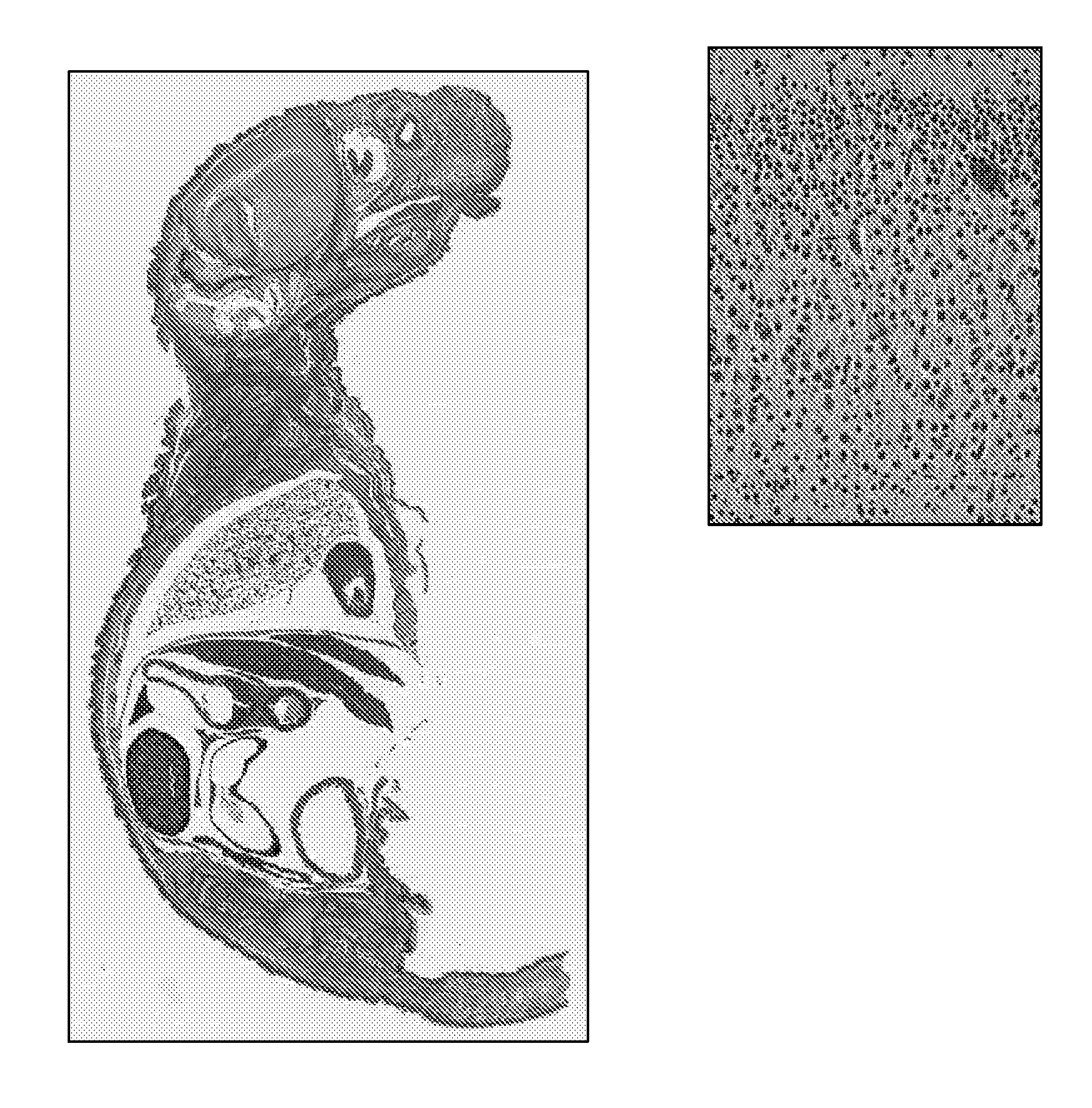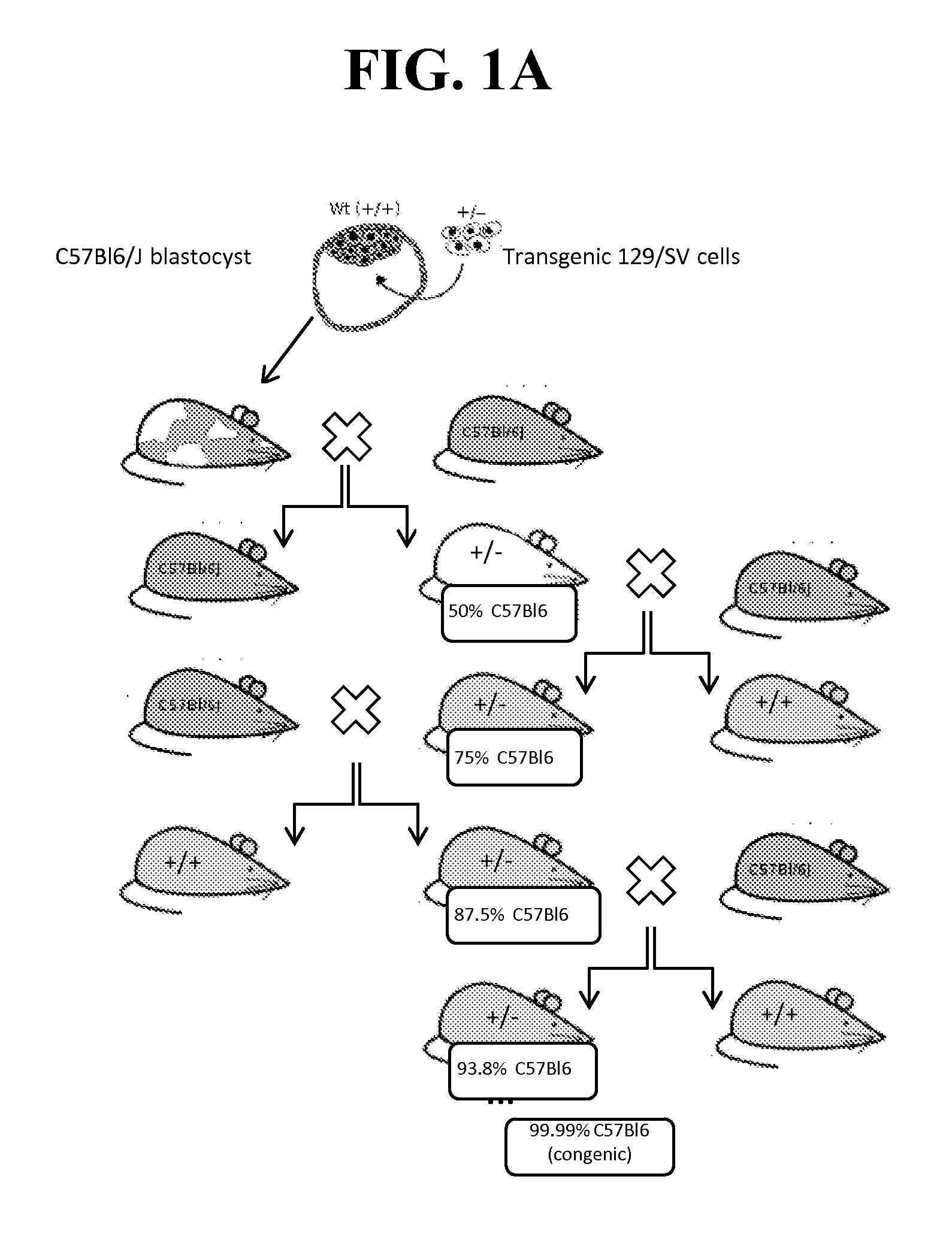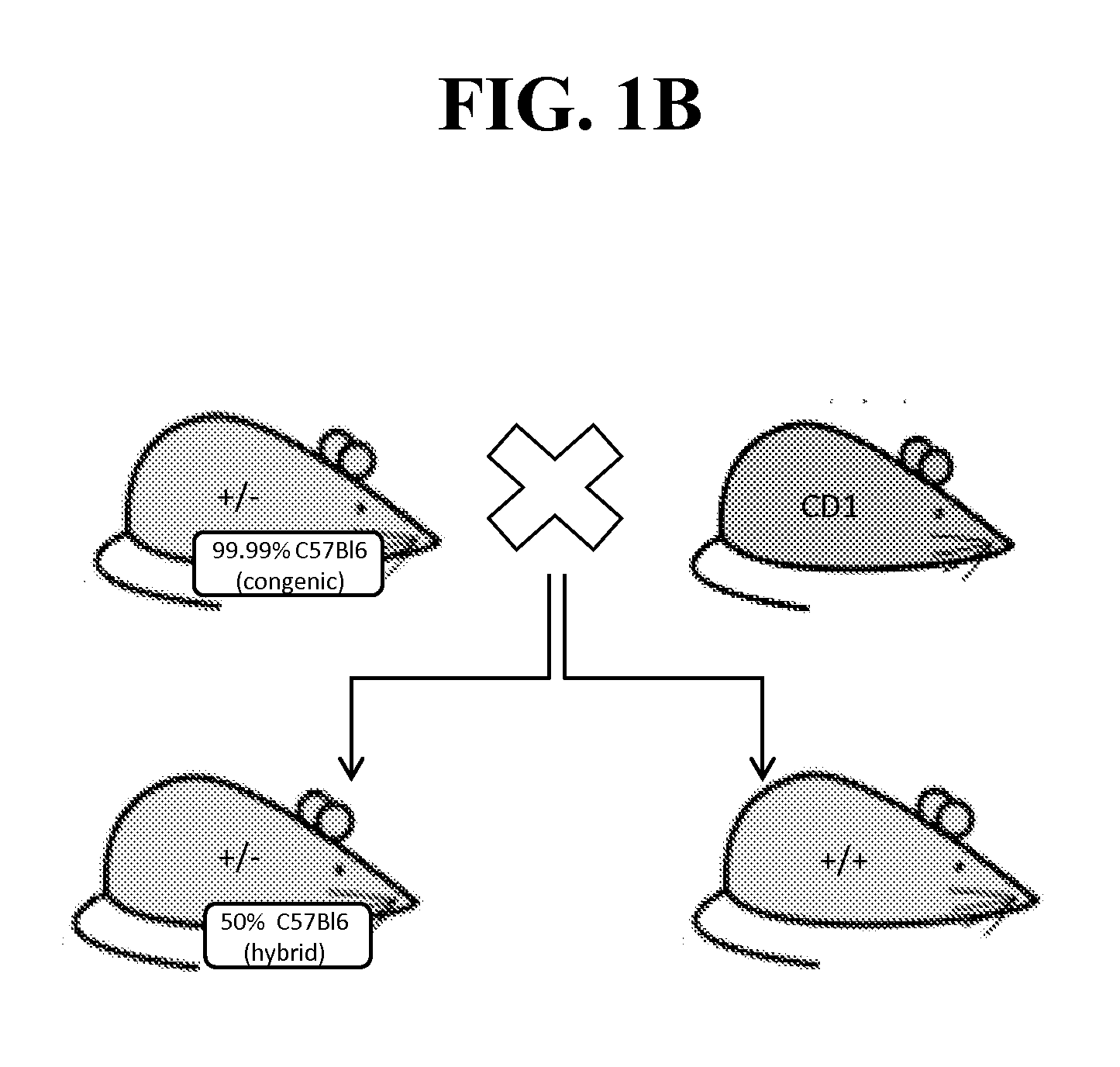Nav1.7-related assays
- Summary
- Abstract
- Description
- Claims
- Application Information
AI Technical Summary
Benefits of technology
Problems solved by technology
Method used
Image
Examples
example 1
[0236]Because of the reported neonatal lethality of NaV1.7 KO animals (heterozygous Nav1.7+ / − mice from Deltagen, San Mateo, Calif.: B6.129P2-Scn9 atm1Dgen / J backcrossed at least 8 generations to C57BL / 6) due to an apparent failure to feed (Nassar et al., 2004), we outcrossed these animals onto a CD1 background to add vigor to the line, as well as a separate backcross onto a BALB / c line to create a congenic line (first breeding pair received in May 2011). (See, FIG. 1A-B).
[0237]No significant differences were noted in Scn9a-CD1 KO or Scn9a-Balbc KO animals. We refer to these animals as NaV1.7 KO and specify the strains when required. All data displayed herein were collected on single out- and backcross. Further backcrosses (for BALB / c line only) are currently being performed, thus far results obtained were identical on a N4 backcross generation. No further increase in survival was observed. The final outcome of the backcrossing has yet to be determined up...
example 2
Preparation of Artificial Mouse Milk (AMA)
[0251]The procedure and composition of the artificial mouse milk prepared was modeled closely after that described by Yajima and co-workers and by Auestad and co-workers. (Yajima, M, et al., A Chemically Derived Milk Substitute that is Compatible with Mouse Milk for Artificial Rearing of Mouse Pups” Exp. Amin. 55(4), 391-397, (2006); Auestad, N, et al., Milk-substitutes comparable to rat's milk; their preparation, composition and impact on development and metabolism in the artificially reared rat, Br. J. Nutr. 61: 495-518 (1989)).
[0252]Reagents and Procedure.
[0253]Reagents used, including source, amounts used, solvents and amounts used, and miscellaneous comments are listed in Table 3 (below).
[0254]Procedure.
[0255]Step 1: Sodium hydroxide was weighed and transferred to a 10-L beaker. Distilled Water (1.3 L) was added and an overhead stirrer was put in place. Potassium hydroxide was weighed and added to this solution, as were L-serine, L-cyst...
example 3
[0258]The following primers were used to genotype all animals in the colony:
[0259]Forward Scn9a 5′ AGA CTC TGC GTG CTG CTG GCA AAA AC 3′ (SEQ ID NO:1); Reverse Scn9a 5′ CGT GGA AAG ACC TTT GTC CCA CCT G 3′ (SEQ ID NO:2) and Forward Neomycin 5′ GGG CCA GCT CAT TCC TCC CAC TCA T 3′(SEQ ID NO:3). These primers gave rise to an endogenous band of 267 base pairs (Forward Scn9a+Reverse Scn9a) or a targeted band of 389 base pairs (Forward Neomycin+Reverse Scn9a). PCR cycling conditions were as follows:
[0260](1) 95° C. for 7 minutes, followed by 35× cycles of (2)-(4) below, followed by (5)-(6):
[0261](2) 96° C. for 10 seconds;
[0262](3) 60° C. for 30 seconds;
[0263](4) 72° C. for 1.5 minutes,
[0264](5) 72° C. for 7 minutes;
[0265](6) cool to 4° C.
[0266]The genotyped patterns were as follows:
[0267]WT or + / +=endogenous (E) band only
[0268]HET or + / −=endogenous (E)+targeted (T) bands
[0269]KO or − / −=targeted (T) band only
[0270]DNA concentrations ranging between ˜25 ng up to 1 μg were origina...
PUM
 Login to View More
Login to View More Abstract
Description
Claims
Application Information
 Login to View More
Login to View More - R&D
- Intellectual Property
- Life Sciences
- Materials
- Tech Scout
- Unparalleled Data Quality
- Higher Quality Content
- 60% Fewer Hallucinations
Browse by: Latest US Patents, China's latest patents, Technical Efficacy Thesaurus, Application Domain, Technology Topic, Popular Technical Reports.
© 2025 PatSnap. All rights reserved.Legal|Privacy policy|Modern Slavery Act Transparency Statement|Sitemap|About US| Contact US: help@patsnap.com



